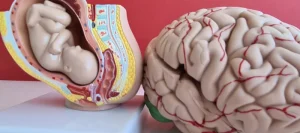
The primary source of cannabinoid toxicity is from plant-derived cannabinoids and synthetic cannabinoids. More than 60 naturally occurring cannabinoids are found in the Sativa and Indica species of Cannabis, with delta-9 tetrahydrocannabinol is cannabidiol addictive (THC) being the main psychoactive compound. Other naturally occurring cannabinoids include cannabidiol and cannabinol. Marijuana is the most common colloquial name for crushed, dried leaves and flowers of the Cannabis plant.
An Update on Safety and Side Effects of Cannabidiol: A Review of Clinical Data and Relevant Animal Studies

The trial involved 109 subjects with mild to moderate symptoms of COVID-19 related [62], subdivided into 49 subjects in the CBD group, who were administered oral CBD at a dosage of 300 mg daily, and 42 subjects in the placebo group. Subjects were taking concomitant medication such as paracetamol, acetaminophen, and dipyrone. Somnolence, fatigue, decreased appetite, lethargy, weight loss, and diarrhea were commonly reported. These AEs were transient with no statistically significant differences between the placebo and CBD groups. Finally, four studies were primarily aimed at describing pharmacokinetic analyses or DDI between CBD and antiseizure or non-antiseizure medications [44, 49, 50, 56]. Patients received a single dose (5, 10, or 20 mg/kg) on day 1 and twice-daily dosing on days 4 through 10 (10-mg/kg (cohort 1), 20-mg/kg (cohort 2), or 40-mg/kg (cohort 3) total daily dose).
Acute Clinical Data

Because the agent can affect many organ systems, an interprofessional team including internists, psychiatrists, and occasionally cardiologists should assist with managing the patient. According to the NIDA-funded Monitoring the Future survey, the peak year of use occurred in 1979, with 60.4% of 12th-grade students having used cannabis in their lifetimes, 50.8% in the preceding year, and more than 10.3% on a daily basis. Cannabis use began a continuous decline, with the lowest use occurring in 1992. At that time, 32.6% of 12th-grade students reported ever using cannabis, 21.9% reported use in the preceding year, and 1.9% reported using on a daily basis.
When to Contact a Medical Professional

One study cites that the rate of decline of respiratory function in an 8-year period was greater among marijuana smokers than among tobacco smokers. More than 400 active compounds have been isolated from the cannabis plant. Sixty active compounds are unique to the plant and are collectively known as cannabinoids. Delta-9-tetrahydrocannanbinol (THC) is the most psychoactive cannabinoid, producing euphoria, relaxation, intensification of ordinary sensory experiences, perceptual alterations, diminished pain, and difficulties with memory and concentration.
1. Neurological Studies

In psychiatry, CBD has been suggested to have antipsychotic, antidepressant, anxiolytic, anti-craving, and precognitive effects [1-3]. Our systematic search has led to the inclusion of twelve clinical trials, of which five are RCTs, double-blind, placebo-controlled studies [57-61], six open-label trials [19, 62-64], and one retrospective case series [65]. Considering the increasing interest in CBD therapy for epilepsies, concerns regarding potential cognitive effects have been raised by treating physicians. Three open-label trials assessed whether CBD has long-term cognitive effects in both children and adults with TRE [30, 33, 36].
- Studies defining CBD’s beneficial effects were included to provide balance in estimating risk/benefit.
- There have been few studies of liver test abnormalities during therapy with lower doses of CBD or with commercially available, over-the-counter CBD products.
- It’s important to also let your doctor know if you’re taking other supplements along with CBD since those can also cause different side effects.
